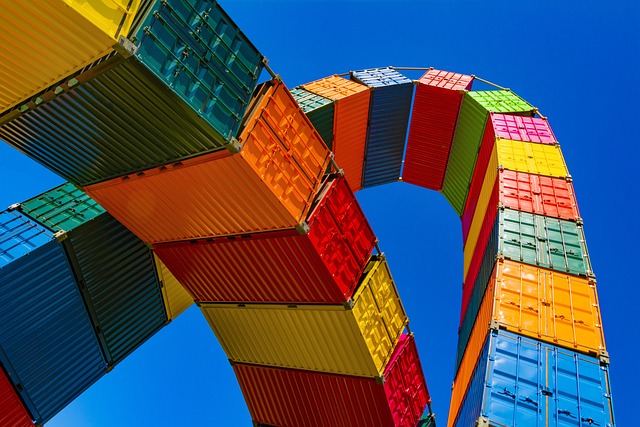The Rise of Robot Trading: Automation in Financial Markets
In the dynamic landscape of financial markets, the evolution of technology has brought forth numerous innovations. Among these is the phenomenon of robot trading, also known as algorithmic trading or automated trading. This approach has transformed the way traders operate, creating a paradigm shift that merits deeper examination. In this article, we will explore the mechanics behind robot trading, its advantages and disadvantages, and its future prospects in the financial arena.

Understanding Robot Trading
At its core, robot trading refers to the use of computer algorithms and automated systems to execute trades in financial markets. These systems are designed to analyze market data, identify trading opportunities, and execute orders at high speeds, often beyond the capability of human traders. Given the complexities of financial markets and the increasing sheer volume of data available, robot trading has become an appealing solution to streamline trading processes.
How Robot Trading Works
Robot trading systems operate based on predefined criteria and algorithms that assess market conditions. Here’s a closer look at how they function:
- Data Analysis: These systems process vast amounts of market data, including price movements, trading volumes, and historical trends, at extraordinary speeds.
- Algorithmic Decision Making: Based on the patterns identified in the data, algorithms make decisions about when to enter or exit trades.
- Automation: Once a trading signal is generated, the robot executes the trade without human intervention. This can occur in milliseconds, allowing for greater opportunities in quickly changing markets.
- Backtesting: Most robot trading systems include backtesting functionality. This allows traders to evaluate the performance of their strategies by simulating trades using historical data before applying them in live markets.
Types of Robot Trading Systems
There are several types of robot trading systems that cater to different trading styles and objectives. Some popular categories include:
- High-Frequency Trading (HFT): This approach involves executing a large number of orders at extremely high speeds, capitalizing on small price discrepancies.
- Forex Robots: These specialized trading algorithms focus on the foreign exchange market, utilizing strategies tailored to currency pairs.
- Arbitrage Systems: These systems exploit price differences across markets or financial instruments to make a profit with minimal risk.
- Market Making Robots: These traders provide liquidity to the market by offering to buy and sell large quantities of assets and profiting from the spread between the bid and ask prices.
Advantages of Robot Trading
The rise of robot trading has garnered attention not only for its innovative approach but also for the numerous advantages it offers. Here are some of the most significant benefits:
1. Speed and Efficiency
One of the most compelling advantages of robotic trading is speed. As markets move rapidly, being able to execute trades in a matter of milliseconds can make the difference between a profitable trade and a missed opportunity. Moreover, robots do not require breaks or rest, meaning they can operate 24/7 without fatigue.
2. Emotionless Trading
Human emotion can significantly impact trading decisions, often leading to irrational choices based on fear or greed. Robot trading mitigates this by adhering strictly to predetermined algorithms, ensuring that decisions are based on logic and data rather than emotion.
3. Backtesting and Optimization
Backtesting allows traders to experiment with different strategies using historical data before risking real capital. This iterative process enables them to refine their strategies to maximize potential profits while minimizing risks.
Disadvantages of Robot Trading
Despite its advantages, robot trading is not without its challenges. Understanding these drawbacks is essential for anyone looking to venture into this realm.
1. Technical Failures
The reliance on technology means that robot trading systems are vulnerable to technical issues, software bugs, or connectivity problems. A malfunctioning system can result in unexpected losses.
2. Lack of Flexibility
Markets are inherently unpredictable, and while algorithms can adapt to some extent, they may not account for unforeseen events, such as geopolitical tensions or market crashes. This can render a trading algorithm ineffective in rapidly changing circumstances.
3. Over-Optimization Risks
Traders may be tempted to tweak their algorithms excessively during backtesting, leading to a phenomenon known as 'overfitting.' This occurs when a strategy works well on historical data but fails to perform in live trading conditions.

The Future of Robot Trading
As technology evolves, so too does the landscape of robot trading. Artificial intelligence (AI) and machine learning have begun to shape the next generation of trading algorithms, offering even greater potential for improved performance and adaptability.
Integration of AI and Machine Learning
AI can process and analyze data far beyond human capability, identifying patterns and trends that may go unnoticed. Machine learning algorithms can evolve and improve themselves over time, adapting to new market conditions and enhancing accuracy. This integration has the potential to elevate robot trading to unprecedented levels.
Regulatory Scrutiny
As robot trading continues to proliferate, so does scrutiny from regulatory bodies. Issues such as market manipulation, flash crashes, and the ethical implications of algorithmic decision-making have prompted calls for more robust regulation in the field of automated trading.
Conclusion: The Balance Between Innovation and Regulation
In my opinion, the future of robot trading holds substantial promise, but it must be approached with caution. The blend of speed, efficiency, and analytics offers significant advantages to traders, but it is crucial to remain mindful of the technical limitations and ethical considerations that accompany such automation. As such, a balanced approach to regulation is essential to foster innovation while safeguarding market integrity. As we navigate this evolving landscape, both traders and regulators must work together to promote a fair and efficient marketplace for all participants.